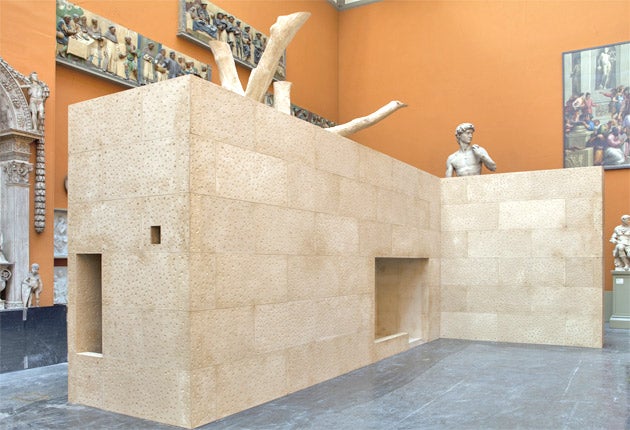1:1 Architects Build Small Spaces, V&A, London

Your support helps us to tell the story
From reproductive rights to climate change to Big Tech, The Independent is on the ground when the story is developing. Whether it's investigating the financials of Elon Musk's pro-Trump PAC or producing our latest documentary, 'The A Word', which shines a light on the American women fighting for reproductive rights, we know how important it is to parse out the facts from the messaging.
At such a critical moment in US history, we need reporters on the ground. Your donation allows us to keep sending journalists to speak to both sides of the story.
The Independent is trusted by Americans across the entire political spectrum. And unlike many other quality news outlets, we choose not to lock Americans out of our reporting and analysis with paywalls. We believe quality journalism should be available to everyone, paid for by those who can afford it.
Your support makes all the difference.We define our lives by the way we regard and respond to the spaces we inhabit. This summer the Victoria & Albert Museum is showing – scattered willy-nilly – seven small, newly commissioned, purpose-built structures by architectural practices from across the world.
They pop up where you don't expect them – in the Cast Court, for example, sited impertinently a skip and a jump from Michelangelo's David; at the top of the staircase as you enter the Architecture Gallery, where a kind of abstract variant on a tree-like structure blocks your way; or in the stairwell that abuts the V&A's great National Art Library, where a four-storey wooden book tower has risen up like some Old Testament miracle. What are they all here for?
In part, they are what you might call art interventions. They exist to force you into thinking how their presence has somehow destabilised the architectural certitudes amidst which they exist. They offer smallness, quirkiness and varying degrees of informality amidst much that seems to represent gravity, monumentality and permanence – in short, all the pomp and circumstance of the great 19th-century museum that this is. But they exist for themselves alone too, to show us what small structures can be good for, socially and culturally, what they can tell us about ourselves and how we respond to architectural spaces.
Look for example at the wonderful tree-like structure outside the architecture gallery, by Sou Fujimoto. It is almost unfathomable when we first confront it, at the top of the stairs – it is some kind of strange geometric form that seems to resemble the generic blueprint of a tree. Because it is almost transparent, we ache to enter it. But we are not sure whether it will let us. It does.
Equally marvellous is the structure by Helen & Hard of Norway in the garden at the centre of the museum, just beyond the pond. It looks like a cluster of trees huddled together in a bit of a confab. We enter this near perfect circle to find that although the outer halves of all the trees look to be near perfect examples of their kind, this is in fact a circle of half-trees. The trees have been cut in half and the insides have been milled away. There are steps for climbing, in a spiral. The curator having refused to do so, I wait for a child to show me how. But the most beguiling aspect of this strange man-milled, man-manipulated copse is its canopy of branches that sweeps over like great clotted swathes of human hair, shading us from the sun. The trees are ash, but the canopy is a tremendous show of willow. They have been seamlessly grafted together – as in some nursery tale.
Elsewhere you can see a woodshed, a teahouse raised on stilts, and a booth that spirals up and up and where, in the coming days, you may be invited to participate in an ever-shifting dramatic performance. Be prepared for a certain amount of lively participation.
To 30 August (020 7942 2000)
Join our commenting forum
Join thought-provoking conversations, follow other Independent readers and see their replies
Comments